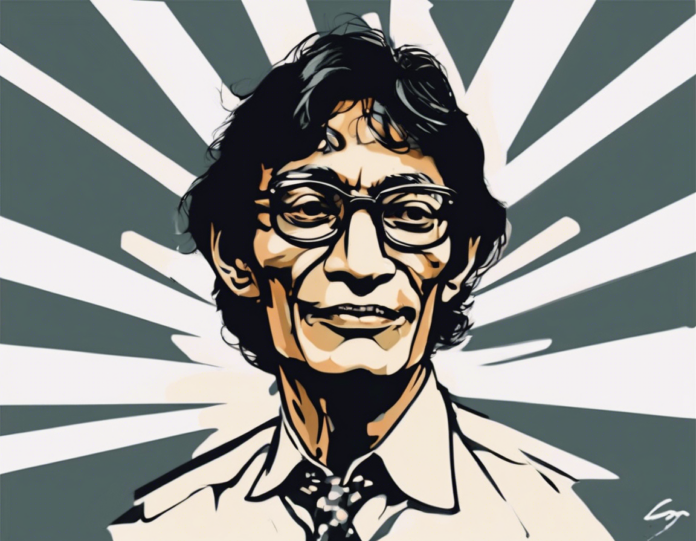Charles Sobhraj is a name that elicits a mix of fascination and horror in the annals of criminal history. Known as the “Bikini Killer” and the “Serpent,” Sobhraj’s life is a reflection of an individual who operated on the fringes of society, blending charm and ruthlessness to prey on unsuspecting victims. From his early years to his reign of terror throughout Asia, Sobhraj’s criminal exploits have left an indelible mark on the true crime landscape. Let’s delve deeper into the life and crimes of this enigmatic figure.
Early Life and Criminal Beginnings
Charles Sobhraj was born on April 6, 1944, in Saigon, French Indochina (now Vietnam), to an Indian father and Vietnamese mother. Raised in a turbulent environment marked by his parents’ tumultuous relationship and subsequent divorce, Sobhraj’s formative years were marred by a sense of dislocation and alienation. These early experiences would later shape his personality and criminal inclinations.
Sobhraj’s criminal career began in the 1960s when he embarked on a path of fraud, theft, and deception across Europe. His charismatic demeanor and ability to manipulate people allowed him to seamlessly blend into different social circles, making him a master of disguise and deceit. These skills would become instrumental in his more sinister endeavors in the years to come.
Rise to Infamy: The Bikini Killer
In the early 1970s, Charles Sobhraj’s criminal activities took a darker turn as he escalated to serial murder. Operating primarily in Southeast Asia, Sobhraj targeted young Western tourists, especially hippie backpackers, who were drawn to the region’s exotic allure. His modus operandi involved befriending and then drugging, robbing, and ultimately killing his victims, often disposing of their bodies in remote locations.
One of Sobhraj’s most infamous crimes was the spree of murders in Thailand, which earned him the moniker “Bikini Killer.” The brutal killings shocked the public and law enforcement agencies alike, prompting a widespread manhunt across multiple countries to capture the elusive fugitive. Despite evading authorities on numerous occasions, Sobhraj’s luck eventually ran out, leading to his arrest and subsequent trial.
The Art of Manipulation: Sobhraj’s Psychopathic Traits
Central to Charles Sobhraj’s success as a criminal mastermind was his psychopathic personality, characterized by a lack of empathy, manipulative behavior, and a grandiose sense of self-importance. These traits enabled him to charm his victims, elude capture, and evade suspicion for an extended period. Sobhraj’s ability to switch identities, forge documents, and outwit law enforcement showcased his cunning and audacity in equal measure.
Moreover, Sobhraj displayed a narcissistic streak, reveling in the media attention and notoriety surrounding his crimes. He often toyed with the press and authorities, sending taunting letters and cryptic messages that added to his mystique as a criminal genius. Despite the heinous nature of his acts, Sobhraj maintained a veneer of sophistication and charisma that both fascinated and repelled those who crossed his path.
The Legacy of Charles Sobhraj
Charles Sobhraj’s criminal career came to an end in 2003 when he was convicted of multiple murders and sentenced to life in prison in Nepal. His capture and subsequent imprisonment marked the closure of a chapter in which Sobhraj had operated with impunity and unchecked violence. However, his legacy as one of the most prolific serial killers in modern history endures, sparking debates about his motivations, methods, and impact on true crime narratives.
Sobhraj’s story has been the subject of numerous books, documentaries, and films that seek to unravel the enigma of his persona and the depths of his depravity. From his early years of petty crime to his transformation into a cold-blooded killer, Sobhraj’s trajectory offers a chilling glimpse into the dark side of human nature and the allure of forbidden desires. As his notoriety persists, Charles Sobhraj remains a cautionary tale of the dangers posed by individuals who manipulate others for their own gain.
Frequently Asked Questions (FAQs)
Q1: How many people did Charles Sobhraj kill?
A1: Charles Sobhraj is believed to have killed at least 12 people, though the exact number of his victims remains unknown.
Q2: What was Charles Sobhraj’s modus operandi?
A2: Sobhraj would befriend and drug young Western tourists before robbing and subsequently killing them, often disposing of their bodies in remote locations.
Q3: Was Charles Sobhraj ever caught?
A3: Yes, Sobhraj was captured in 1976 in India but managed to escape from prison multiple times before being arrested for the final time in Nepal in 2003.
Q4: How did Charles Sobhraj manipulate his victims?
A4: Sobhraj used his charm, charisma, and ability to deceive to manipulate his victims into trusting him before carrying out his nefarious deeds.
Q5: What is Charles Sobhraj’s current status?
A5: Charles Sobhraj is currently serving a life sentence in Nepal for multiple murders committed during his criminal spree in the 1970s.

